The recent royal wedding in the UK prompts thoughts about the imperial family in Japan. In both cases the monarch is the head of the presiding religion, though a female monarch in Britain’s case would currently be an impossibility in Japan due to a Meiji-era law.
Joseph Cali, co-author of Shinto Shrines, runs an excellent blog with the same name and has written in admirably clear terms of the constitutional situation confronting the emperor’s situation here in Japan. Green Shinto is grateful to him for permission to repost here.
****************
The Modern History (Controversy) of the Emperor’s Succession
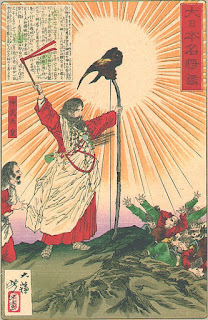 |
| The legendary first Emperor Jimmu, supposedly 660-585 BC |
On December 1 2001 a daughter was born to the Crown Prince of Japan, thereby stirring an old controversy on the right of succession to the Chrysanthemum Throne. Princess Toshi, whose given name is Aiko, is the only child of the eldest son the Emperor’s eldest son, Crown Prince Naruhito, who will succeed his father to the throne: no problem there.
If Prince Naruhito had a son, he would be next in line to succeed. However, women are barred from succession and this is where the old controversy has been revived. Until September 2006, the controversy was particularly acute. That is because the Crown Prince’s younger brother, Fumihito, also had two daughters who were barred from succession. In other words: only female heirs. But in that year, a son was born to Fumihito. Named Prince Hisahito, he is now next in line to the throne after his uncle.
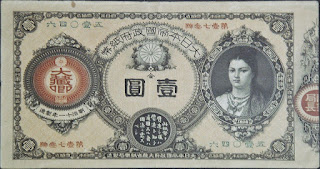 |
| Legendary Empress Jingu (r. 201-269) Mother of Emperor Ojin and worshiped together as the kami Hachiman |
Why the controversy? Simply because, like so many aspects of Japanese culture, the succession law is an ‘invented tradition‘. Historically, the Emperor’s succession has been male dominated, but some female Emperors even ascended the throne more than once. The Emperor also, traditionally, never stepped outside the palace grounds and most people had no idea who the Emperor was at any given time. This changed, as so many of Japan’s “immutable traditions” did, after the Meiji Restoration of 1868.
As most readers probably know, this is the beginning of the modern period when the Shogun was deposed and the Emperor “restored” to primacy as head of state – a position he had neither officially or unofficially occupied since the Kamakura Period beginning about 1185. Of course, after being restored, he was still, and is today, only a figurehead. Rather, the “restoration” ushered in a semi-democratic form of government. And that government not only legislated for the people, it legislated for the Emperor too. The Imperial House Code, established in 1889, and heavily influenced by the love affair with Prussia, instituted a number of changes that continue to haunt the country.
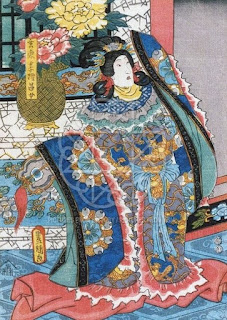 |
| Empress Gensho (r.715-724), a unique example of an Empress who succeeded her mother (Empress Genmei) |
The first change from traditional practices was no female succession. The second change was to forbid agnatic succession, whereby another relative – usually a brother – could succeed. The third change was to stipulate that an adopted child could not succeed. In fact, historically the last adopted child to become emperor was Kokaku (r.1780–1817) who stepped in because the previous Emperor, Go-Momozono, died childless.
Kokaku was also the last emperor to abdicate, which he did in favor of his son Emperor Ninko. Which brings us to the fourth change: abdication was forbidden by the 1889 law. So here lies another controversy: the current Emperor Akihito, age 83, has decided to abdicate by 2019 due to health issues. This sent the government scrambling to change the law, while die-hard opponents sought ways to convince the emperor to die in office.
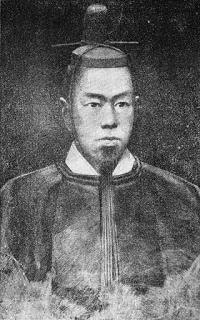
Emperor Komei (r. 1846-67), the last feudal emperor and the last to reside in Kyoto
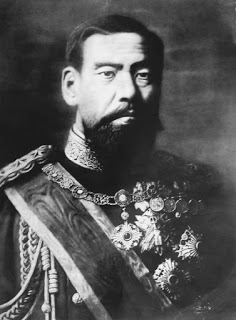
Komei’s son, Emperor Meiji (r.1867-1912), first to preside over a parliament
The Meiji-era law was rewritten in 1947, mostly because Japan adopted a new American influenced constitution. However changes were minor and it was pretty much kept the same, except to further add a restriction that illegitimate children could not succeed (which went along with a ban on emperors having concubines). It also abolished collateral houses, which traditionally would have provided male heirs too.
However, the problem of the emperor’s abdication has been overcome, simply because the Emperor insists he will abdicate – and who is going to stop him? Which demonstrates very clearly that where there’s a will there’s a way. So why all the fuss about succession? It would be easy to change the law to allow daughters to succeed, and despite a widely held misconception the present law is not based on Japanese tradition. In fact, the majority of the population is in favor of a change, as a number of polls have shown, but among the Japanese ruling class – I mean the ‘permanent’ ruling class – “not over my dead body” remains the attitude.

Leave a Reply